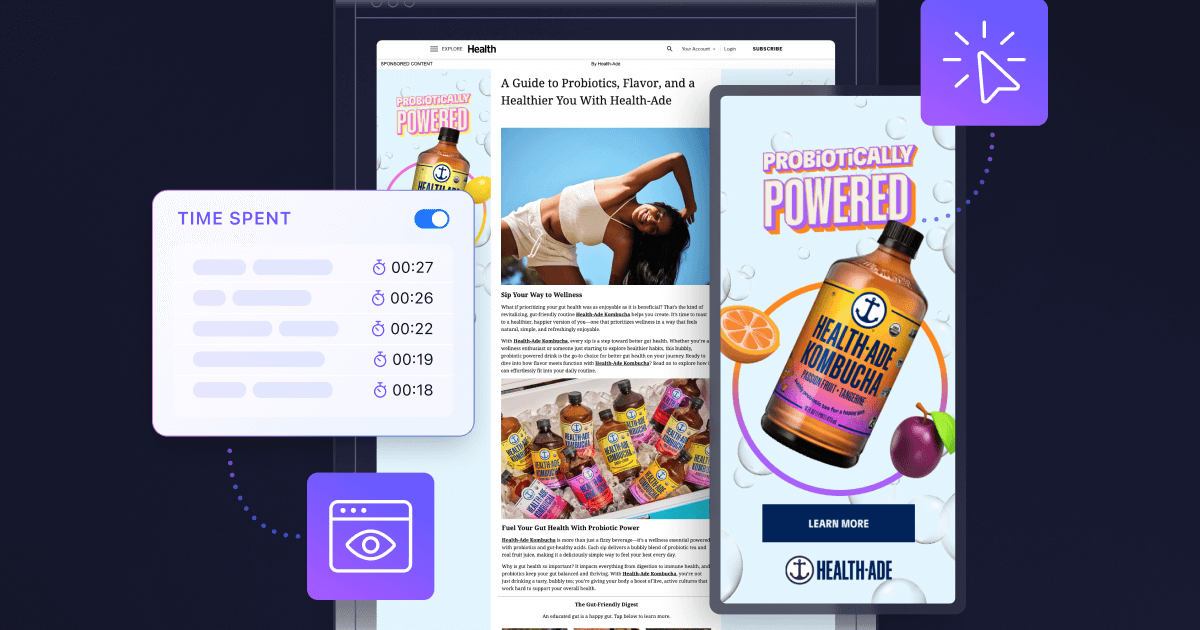How to Turn Data into Actionable Insights
.png)
Written by Erin Tye, Director of Content Insights & Innovation at Nativo Inc.
Content marketers are rich in performance data. Or should I say drowning?
We’ve never had more numbers at our fingertips to evaluate performance. As of 2022, the average marketer used 15 different data sources. But data is only an asset if you know what to do with it. 84% of marketing leaders say they still struggle to translate their data into actionable insights and rely mostly on guesswork. Yikes.
While the warp-speed rise of AI opens up interesting possibilities (Nativo launched a whole AI-powered Insights Platform last year), those tools are only as functional as the people guiding them. The human gift for critical analysis has never been more important - and the time is now to invest in honing your insights chops.
Our VP of Insights and Innovation giving a high level overview of our Insights Platform
Data vs. Insights: What’s the Difference?
Let’s start at square one. What’s the difference between “data” and “insights”? We often use these terms interchangeably, but they’re different things. Data is the factual, quantitative representation of performance. An insight goes deeper. It’s the actionable and qualitative result of distilling said data through the lens of critical thinking. I’ll give you a simple example:
- Data: The headline keyword phrase “weight loss” drove a -40% lift in click-through rate. The headline keywords “confidence,” “energy” and “strength” drove a +37% lift in click-through rate.
- Observation: Readers were less likely to initially engage with the content when it directly references weight loss.
- Insight: In the body positivity and inclusivity era, readers are less likely to engage with standard or “old-fashioned” weight loss messaging. Instead, they’re motivated by the secondary effects weight loss could have on their life - improved confidence, more energy, and feeling stronger.
You might notice a third category popped into the mix. It’s a common pitfall to restate the data using words and mistake it for genuine insight. I call this middle ground “observation.” Push yourself beyond this point.
Crafting Actionable Insights
Over the years of working in content insights, I’ve distilled my approach to a 4-question checklist. When forming your conclusions, ask yourself these questions, and you should land in the right place.
Question 1: Is this an observation or an insight?
Are we just re-stating what the data is showing? Here’s an easy gut check - if you sent a screenshot of your data, could anyone easily reach the same conclusion? If so, you’re likely not yet at an insight. Push yourself to do better.
Question 2: Is it actionable?
Can you take this insight and easily and meaningfully act on it? I’ll give you an example. Years ago, an auto insurance client ran a series of funny, real-life stories about unbelievable insurance claims they’d gotten. The top-performing headline keyword across their content was “curly fries.” (There was a story about someone leaving curly fries in their car and accidentally attracting animals who destroyed the car.) Surprising, definitely. Useful…probably not. What would the follow-up be here? The client can only talk about curly fries for the rest of time?
Question 3: Is it repeatable?
Would this insight hold up to future testing? You’re not a psychic, you can’t be 100% sure, but you should be reasonably confident. Some elements that can help:
- Volume: Do you have substantial impressions or creative volume? E.g., Maybe “luxury” was your top-performing keyword, but it’s only in 1 out of 30 headlines across the campaign. You’re at risk of conflation here. When this happens, position it as an “emerging” insight and recommend further testing.
- Cross-checking: Are you mistaking correlation for causation? Let’s go back to the curly fries example. While “curly fries” was the keyword that popped as a top performance driver, once we cross-checked the full headlines, we saw that every time “curly fries” appeared in a headline, it used the same tactic - teasing a crazy or unbelievable story. So, the finding here is a tactical one, not keyword.
- Zoom Out: The more niche the finding, the trickier to replicate. That’s not to say you should only provide sweeping, generic insights. Just make sure you’re not painting yourself into a corner. A helpful tip is to tie your finding to broader market or vertical context. We saw messaging around safety and cleanliness pop for our travel campaigns throughout much of 2021 when the world was slowly normalizing, but fear of COVID was still rampant. We knew that trend wouldn’t last forever, so we contextualized the finding against trends for the whole vertical.
Question 4: So what?
Does this matter? Is this interesting? Is this useful? If you or your client can’t do anything with the insight, its value is limited. A great insight is a starting point, not a finish line. It should spawn more questions, testing opportunities and ideas. It should inform your content production, strategy or distribution. If your insight is a dead end, axe it.
Conclusion
Creative insights are truly both art and science. It takes practice, and some insights will be more compelling than others. Focus on providing value, going beyond observations and telling a story about your content, audience or industry. And remember, it’s just as important to figure out what doesn’t work. Don’t shy away from bad performance - sometimes, that’s where the best stories are hiding.
Request a live demo of our powerful Insights Platform today and take your branded content to the next level.

.jpg)


